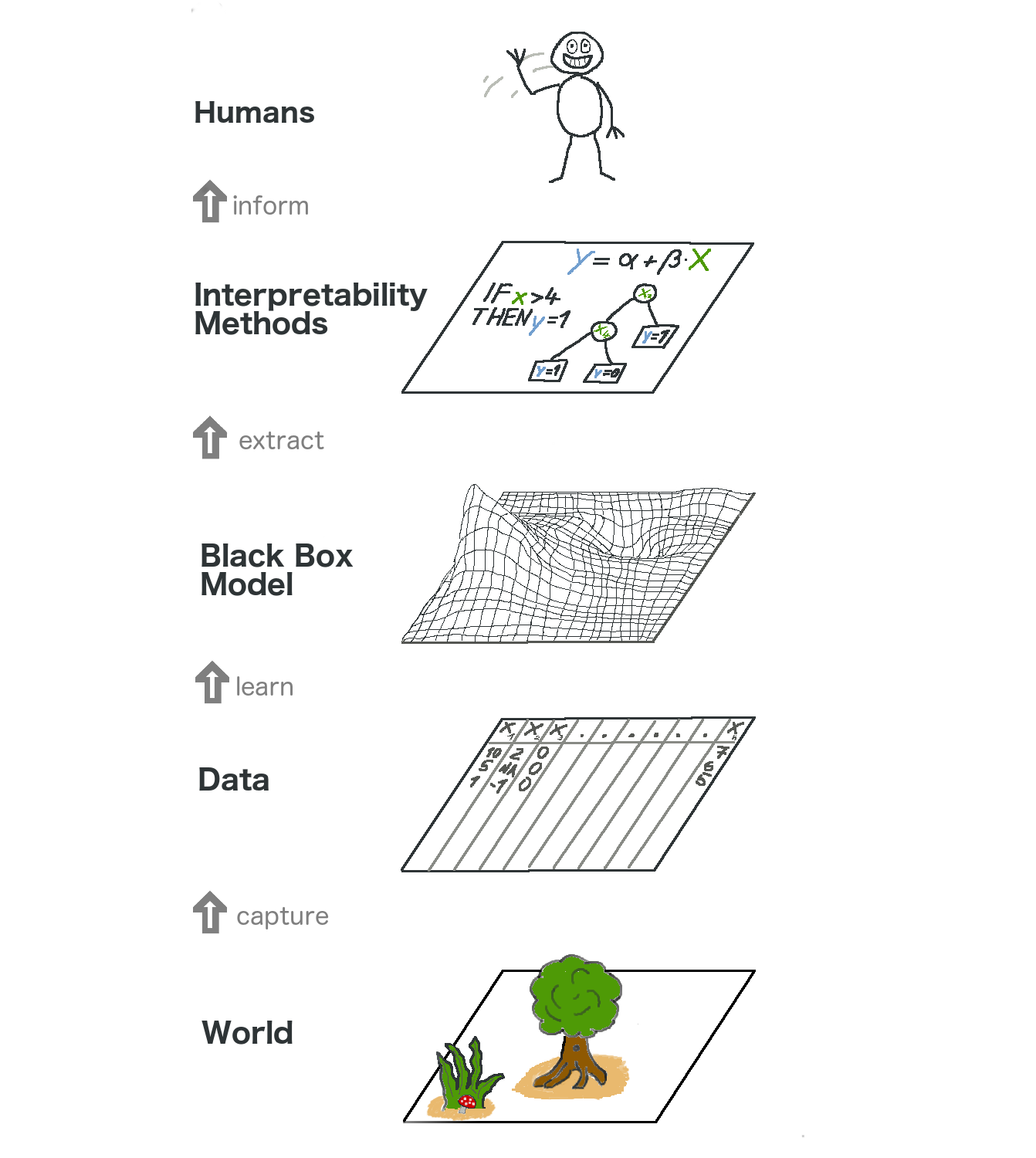บทที่ 5 Model-Agnostic Methods
Separating the explanations from the machine learning model (= model-agnostic interpretation methods) has some advantages (Ribeiro, Singh, and Guestrin 201626). The great advantage of model-agnostic interpretation methods over model-specific ones is their flexibility. Machine learning developers are free to use any machine learning model they like when the interpretation methods can be applied to any model. Anything that builds on an interpretation of a machine learning model, such as a graphic or user interface, also becomes independent of the underlying machine learning model. Typically, not just one, but many types of machine learning models are evaluated to solve a task, and when comparing models in terms of interpretability, it is easier to work with model-agnostic explanations, because the same method can be used for any type of model.
An alternative to model-agnostic interpretation methods is to use only interpretable models, which often has the big disadvantage that predictive performance is lost compared to other machine learning models and you limit yourself to one type of model. The other alternative is to use model-specific interpretation methods. The disadvantage of this is that it also binds you to one model type and it will be difficult to switch to something else.
Desirable aspects of a model-agnostic explanation system are (Ribeiro, Singh, and Guestrin 2016):
- Model flexibility: The interpretation method can work with any machine learning model, such as random forests and deep neural networks.
- Explanation flexibility: You are not limited to a certain form of explanation. In some cases it might be useful to have a linear formula, in other cases a graphic with feature importances.
- Representation flexibility: The explanation system should be able to use a different feature representation as the model being explained. For a text classifier that uses abstract word embedding vectors, it might be preferable to use the presence of individual words for the explanation.
The bigger picture
Let us take a high level look at model-agnostic interpretability. We capture the world by collecting data, and abstract it further by learning to predict the data (for the task) with a machine learning model. Interpretability is just another layer on top that helps humans understand.

ภาพประกอบ 5.1: The big picture of explainable machine learning. The real world goes through many layers before it reaches the human in the form of explanations.
The lowest layer is the World. This could literally be nature itself, like the biology of the human body and how it reacts to medication, but also more abstract things like the real estate market. The World layer contains everything that can be observed and is of interest. Ultimately, we want to learn something about the World and interact with it.
The second layer is the Data layer. We have to digitize the World in order to make it processable for computers and also to store information. The Data layer contains anything from images, texts, tabular data and so on.
By fitting machine learning models based on the Data layer, we get the Black Box Model layer. Machine learning algorithms learn with data from the real world to make predictions or find structures.
Above the Black Box Model layer is the Interpretability Methods layer, which helps us deal with the opacity of machine learning models. What were the most important features for a particular diagnosis? Why was a financial transaction classified as fraud?
The last layer is occupied by a Human. Look! This one waves to you because you are reading this book and helping to provide better explanations for black box models! Humans are ultimately the consumers of the explanations.
This multi-layered abstraction also helps to understand the differences in approaches between statisticians and machine learning practitioners. Statisticians deal with the Data layer, such as planning clinical trials or designing surveys. They skip the Black Box Model layer and go right to the Interpretability Methods layer. Machine learning specialists also deal with the Data layer, such as collecting labeled samples of skin cancer images or crawling Wikipedia. Then they train a black box machine learning model. The Interpretability Methods layer is skipped and humans directly deal with the black box model predictions. It's great that interpretable machine learning fuses the work of statisticians and machine learning specialists.
Of course this graphic does not capture everything: Data could come from simulations. Black box models also output predictions that might not even reach humans, but only supply other machines, and so on. But overall it is a useful abstraction to understand how interpretability becomes this new layer on top of machine learning models.
Ribeiro, Marco Tulio, Sameer Singh, and Carlos Guestrin. "Model-agnostic interpretability of machine learning." ICML Workshop on Human Interpretability in Machine Learning. (2016).↩